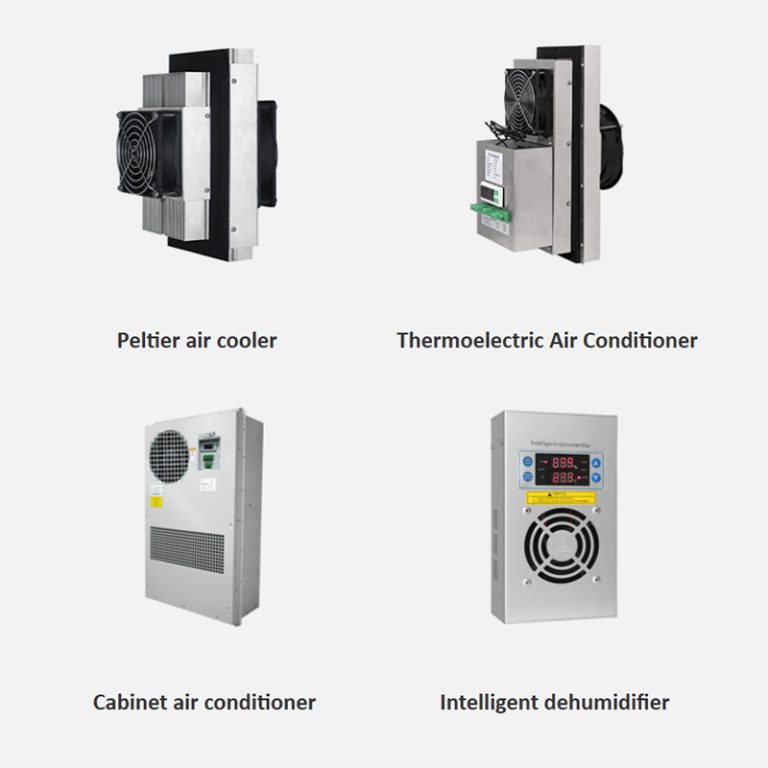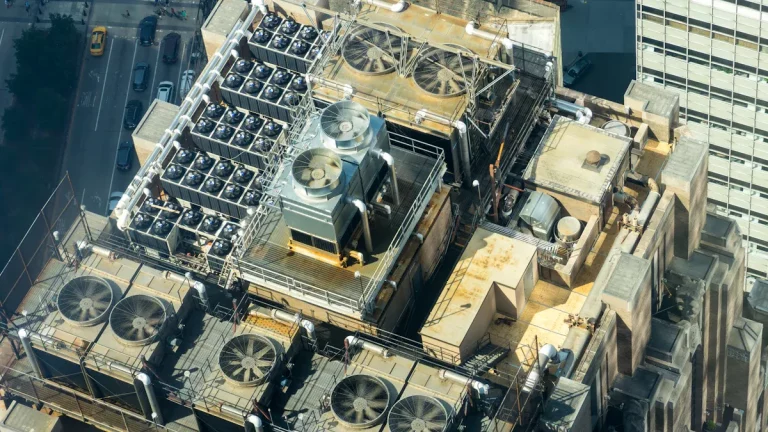Composition of Cabinet Fans
In the electrical industry, collectively referred to as fans are those equipped with blades, while those solely used for ventilation without blades are known as filter grilles or grids. A common configuration involves pairing one fan with one filter grille. The fan assembly consists of cooling fans and fan protective covers. Cooling fans are utilized to circulate air into the cabinet or expel hot air from within, while fan protective covers serve to safeguard the fan. The filter grille is composed of plastic grids and filter cotton, with the filter cotton serving to filter dust and fine particles from the air.

Remark:
a: The effectiveness of fans comes into play only when the cabinet’s internal temperature exceeds the ambient temperature. As hot air has a lower density than cold air, the airflow inside the cabinet moves from bottom to top. Hence, it is advisable to position the inlet below, either at the front door or side panel and the outlet at the top.
b: In cases where certain equipment generates heat at the top, sides, or front door, making it impractical to install fans at these locations, openings at the top are necessary. The fan should be oriented to exhaust hot air out of the cabinet rather than drawing air into it.
If the working environment of the cabinet is regularly impacted by factors such as dust, oil mist, water vapor, it is recommended to use fan filters at the inlet and filter grilles at the outlet to prevent the entry of dust, oil mist, and water vapor into the cabinet.
Principle of Cabinet Air Conditioning
Cabinet air conditioning typically employs a refrigeration cycle system, comprising a compressor, condenser, evaporator, and fans, to maintain the temperature inside the cabinet. Below is an explanation of the operating principles of these components:
Compressor:
Principle: The compressor, the core of the refrigeration cycle, draws in low-temperature, low-pressure refrigerant gas and compresses it into high-temperature, high-pressure gas through mechanical action.
Condenser:
Principle: High-temperature, high-pressure refrigerant gas enters the condenser, where it releases heat by coming into contact with surrounding air. In this process, the refrigerant gas cools and condenses into a liquid. The condenser is typically equipped with a fan to enhance heat dissipation.
Evaporator:
Principle: The high-pressure liquid refrigerant, after condensation, enters the evaporator through an expansion valve or throttling valve. In the evaporator, the refrigerant rapidly evaporates into a low-temperature, low-pressure gas, absorbing heat from the cabinet’s interior and reducing the temperature inside the cabinet.
Fan:
Principle: The fan is located between the condenser and evaporator, promoting airflow. On the condenser, the fan helps expel hot air from the cabinet, while on the evaporator, it aids in distributing cold air throughout the cabinet.
The entire refrigeration cycle involves the compressor compressing, cooling, and condensing the refrigerant gas into a liquid. The liquid refrigerant then enters the evaporator through an expansion valve or throttling valve, evaporates, absorbs heat, and forms a continuous cycle. This process effectively absorbs and dissipates the heat inside the cabinet, maintaining the equipment at an appropriate working temperature.






